Tatra T-18

 Czechoslovakia/Poland 1925-1939: Draisines, 7 built
Czechoslovakia/Poland 1925-1939: Draisines, 7 built
Historical Context
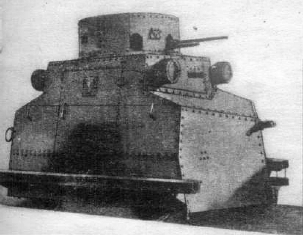 The Draisine (Pol. "Drezyna") or in English improperly translated as "Railcar", is a self-propelled rail-running vehicle designed generally in the civilian sector to rapidlt link any point of the railway network for inspection, maintenance and repair. They were small and propelled y a commmon internal combustion engine (and later electric in some cases) to be deployed in a mere seconds whereas a classic steam locomotive needed at least 30 min. to reach the desired working pressure. The advent of electrical locomotives with external supply made the use of draisines less important, at last in concept.
The Draisine (Pol. "Drezyna") or in English improperly translated as "Railcar", is a self-propelled rail-running vehicle designed generally in the civilian sector to rapidlt link any point of the railway network for inspection, maintenance and repair. They were small and propelled y a commmon internal combustion engine (and later electric in some cases) to be deployed in a mere seconds whereas a classic steam locomotive needed at least 30 min. to reach the desired working pressure. The advent of electrical locomotives with external supply made the use of draisines less important, at last in concept.
Military use of a draisine was also developed in the 1920s and well understood as we way to scout along railway lines, ahead of an armoured train, or patrol the rear. Small, nimble and fast, it could be also armed and armoured, leading to another type of asset in a tacticl use of rail networks in Europe. Nations such as Japan, Germany and others simply preferred to use regular armoured cars, converted with ease by fitting with rail wheels on their axis, setup to the correct gauge. In a mre 15 min. they would be lifted out and tires installed, venturing off the railway. Nevertheless, for Czechoslovakia, which also needed to protect it's internal network, especially in the turbulent early twenties with many fontier incidents, refugee crisis, Bolshevik threats and exacerbated nationalism.
Development
Thus, an armoured draisine was ordered to Tatra, not by the Czech transport or war ministries, but designed in 1925 at Kopřivnická vozovka works (Ringhoffer-Tatra) as a private venture. The specifications were simple, a MG-armed, and lightly armoured railcar. Tatra started not from scratch, but from a chassis of a cargo draisine T14. Although having no experience in designing such "vehicles", it became the one and only armoured draisine ever done by this company.It was apparently developed specially for Poland upon a demand by Polish Tatra Auto Warszawa aware of the needs of the Polish Army after its war with the Bolsheviks. The earliest sketch dated 17 February 1925, shows the chassis equipped with two driver posts on both ends, the engine compartment below, the main observer/gunner in the center and above. Next summer, the body design was ready. It was made of light (6 mm or 0.23 in) plating, rounded front and rear. However these parts were costly and difficult to make and to lower cost for production, soon replaced by simpler flat angled panels, for a symmetrical design bith left-right and front-rear.
Adoption
On 5 September 1925 already, Poland was informed of this model, called the T18. The government ordered six armoured draisines from the drawing board, built at Tatra and delivered in November 1926 under the plate numbers 5545 to 5550. In Polish service these "Tatra drezyna pancerna" were the only deployed, until on 24 December 1926, the Czechoslovak ary staff ordered a single pancéřová drezina, delivered in 1927 (D2.001, factory 7077) for a total of 7 Tatra T18 ever built.Design
General Layout
The T18 is a two-axle light and compact vehicle based on a chassis frame riveted from steel profiles. Both axles are sprung by helical springs, nested in ball bearings. Alight body frame structure is built above, on which are riveted the armour sheets. The roof is reinforced to support a free-traversing (on ball bearings) one man cylindrical turret, just 1,15 m (45 in) in diameter, 46 cm (18 in) in height. To access the vehicle there are two hull sides hatches plus a small 50 cm diameter one on top of the roof. The doubled driver posts (slightly offest to the right) allows, through doubled steering, rapid course reverse along the railroad. Each had a vision slit covered with an armoured hatch. The turret in addition had four vision slots covered with hatches, so generally observation was poor.The chassis frame is covered by a wooden floor on which the crew left their feet, 67 cm (26 in) above rails, but there was a lifting hatch in the central section to access and maintain the engine. The gunner/commander sat on a tripod supporitng the turret and traversed it by hand. The engine could be crank-started of needed via a small internal trap. Due to the cramped interior, both ends of the body covered the legs of the drivers, which head was relatively close to both plated ends.
Power unit and Performances
The small power unit for this three tons (light) vehicle was a tranversal air-cooled flat boxer engine, only capable of such compact dimensions and shape, but which neded a powerful cooling fan. It was coupled with a mechanical gearbox with two gears in both directions, rear axle driven by a chain gear and each driver had three pedals for acceleration, clutch and brake plus a crank for the main brake (right) and gear stick & throttle levers on its left. The T18 could reach a modest 50 kph () at top speed, and for autonomy, it had a fuel tank of 80 liters in the frame, behind the front axle. Apparently the bodywork was secured using sandboxes operated by drivers.Protection
Armour at Tatra was noted as 6 mm for the hull, said to protect against the special armour piercing "S" Mauser bullets at 200 m. The turret had a ciscular plate of 8 mm in thocknes (0.3 inches) for the same at 100 m. It also protected against artillery splinters. The slight sloping of the armopur all around, with no straught flat surface, also slighlty improved ptotection. Factory tests however showed the armour plates from Vitkovice Ironworks were defeated by these Mauser bullets and Tatra turned to Škoda works at Pilsen to deliver another set, and ordered the plates for all seven cars. There was also apparently a partial armoured floor with sandboxes.Crew
The standard was three, the turreted commander-gunner, two drivers with ome sources cliaming two more soldiers culd accomodate the vehicle, but it is dubious due to its very compact size, unless they stand inside the turret in very cramped condition, or are "in portee", standing externally on the two rails. Four is more likely, as the turret was large enough for one man standing, one seated and could operate two machine guns.Armament
The turret has a twin opening, to manage two independent machine guns, mounted in simple fork mountings with open sights, allowing quite a degree of elevation for possible AA fire. In Polish service these were basically licenced Hotchkiss M1914, called 7.92 mm wz. 25 Hotchkiss, air cooled. In most cases, if there were two apertured, just one was mounted at all time and perhaps as spare one inside on the floor. When two were mounted, a couple with a wz. 25 MG and a water-cooled wz. 08 Maxim 7.92 mm MG accoridng to Polish Army regulations from 1938 but this means two gunners inside the confined turret. Photographs mostly showed them with a single wz.25 MG or nothing at all. The Germans seized the unique Czechoslovak draisine sporting two water-cooled 7.92 mm vz.24 Schwarzlose though. At least one was captured by the Germans, and possibly used standard German MG 15 or MG 34.Misc.
It was possible to connect the draisine to a train using a simple coupler shank seen on the upper part of the noses on both sides, to R and TK type draisines and composite armoured trains of 1939. The small boxer engine indeed limited both speed and range, so on long distances, these draisines were often coupled to spare gasoline. Other equipments included the following:-6V electric wiring and dynamo
-100 Ah battery.
-Armoured Bosch headlights on each end (4) with 65 mm armoured glass, alternative white/red light
-One removable searchlight, turret top, Czechoslovak draisine.
-Bosch electric starter.
-Electric pneumatic horn (Czech one).
-Mechanical crank device to move around the vehicle on parallel track (screw jack under engine, turntable, two auxiliary rails).
-Two short rails on the lower sides (Polish) or longer rails usable as side steps
Tatra T18 class specs 1939 | |
| Dimensions (L-W-H) | 3,675 x 1,75 x 2.1 m; wb 1.5 m |
| Weight | 3.7 t (Polish sources: 3.45 t), 5.27t FL |
| Crew | 3 (turret gunner, two drivers) |
| Engine | Tatra T12 12HP 1056cc 4-st. 2-cyl. boxer (8.82 kW) |
| Speed | 45-50 kph (pw 3.2 HP/t) |
| Range | 80 l tank, 700 km |
| Armament | 2x Maxim LMGs (Cz) 1x 7.92mm wz.08 (Hotchkiss) |
| Armor | 6-8 mm (0.25 - 0.3 in) |
Combat Use
T18 Draisines were better than nothing but not considered worth the expanse after evaluation by the Polish Army, as by January 1927 they were too slow, lacking torque to negociate high slopes, poor mobility, acceleration or range. Still, after the first six, Poland ordered nine more on 4 April 1927 without armoured bodies, that would be made in Poland at CWS (Centralne Warszaty Samochodowe) workshops after the first sets were ordered from Ansaldo but cancelled after a first delivery. They were done in the end at Sosnowiec, cancelled after more deliveries with requirements pnly given by August 1931.One plan was to reinforce the structure in order to support a Vz.29 Ursus type turret, combining on one end a 37 mm SA Puteaux gun and a wz. 25 plus better observation periscopes, and new sights for drivers, side sights as well. However in 1932 the whole order was cancelled for good, considering the Tatra draisines obsolete and the solution of rail/road convertible R/TK draisines preferred. It seems that still Tatra provided three new chassis AAs replacement made in Poland. So the official figure of seven is still the one accepted.
Polish draisines were assigned to the Training Battalion for the armoured train corp, based in Jablonna, near Warsaw by 1927. Later in 1935-37 they were assigned to four armoured trains from the 1st Armoured Train Unit, Legionowo, Warsaw and two of the 2nd Unit, Niepołomice, Kraków, one for each, six in all. They were not given named but insteazd numbers such as N°101 to 106 but soon proper names were painted and are immortlized by photos, such as "Osa" (Wasp) or "Żuk" (Beetle). They served with a standad olive green livery but from 1936-1937 all were camouflaged thr army three-colour scheme in airbrushed patches, or back to dark green in 1939. Only markings were the Polish State Railways (PKP) eagle emblem (see illustrations).
In September 1939, T18s were deployed with the armoured trains Nr.15 "Śmierć" and Nr.13 "Generał Sosnkowski", four in all, one platoon each of two Tatras also combined with R draisines. One was destroyed at Nasielsk, 5 September 1939 while in reconnaissance (probably autocannon rounds from a 6x6 German vehicle). As the war progresses thet were gradually abandoned after damage, notably because Nr.13 train was on 10 September 1939, Łochów. One was captured; The fat of those with the 2nd Armoured Train Unit is unknown.
The sole Czechoslovak T18 D2.001 wa used for exercises, testing the concept, with out wtithout coupling with an armoured train on a special flatcar. It was badly damaged in an accident on 7 September 1930. By September 1938 it was in Slovakia with the armoured train N°4 and collided with a locomotive on 22 November, in Zvolen. It was captured on 15 March 1939 at Milovice. Fate unknown.
Gallery
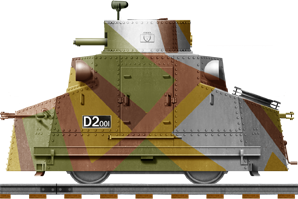
Czech Tatra T-18 D2.001n Armored Train N°6 Sept. 1938
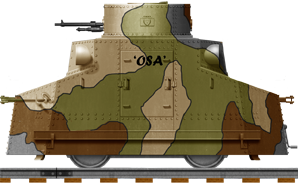
Early Polish T18 "Osa" 1933
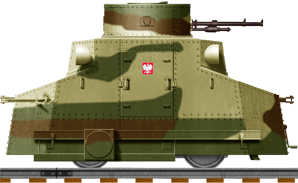
Polish T18, 2nd armored trains bat. 1939
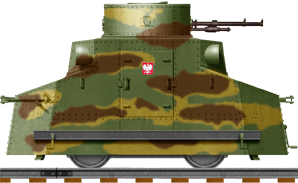
Polish T18, Unknown unit
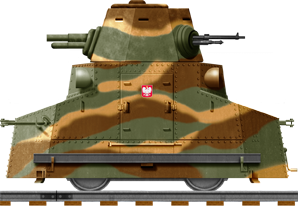
Polish T18 with Tursus turret, late 1939, concept only, part of an order of nine vehicle, cancelled in 1932.
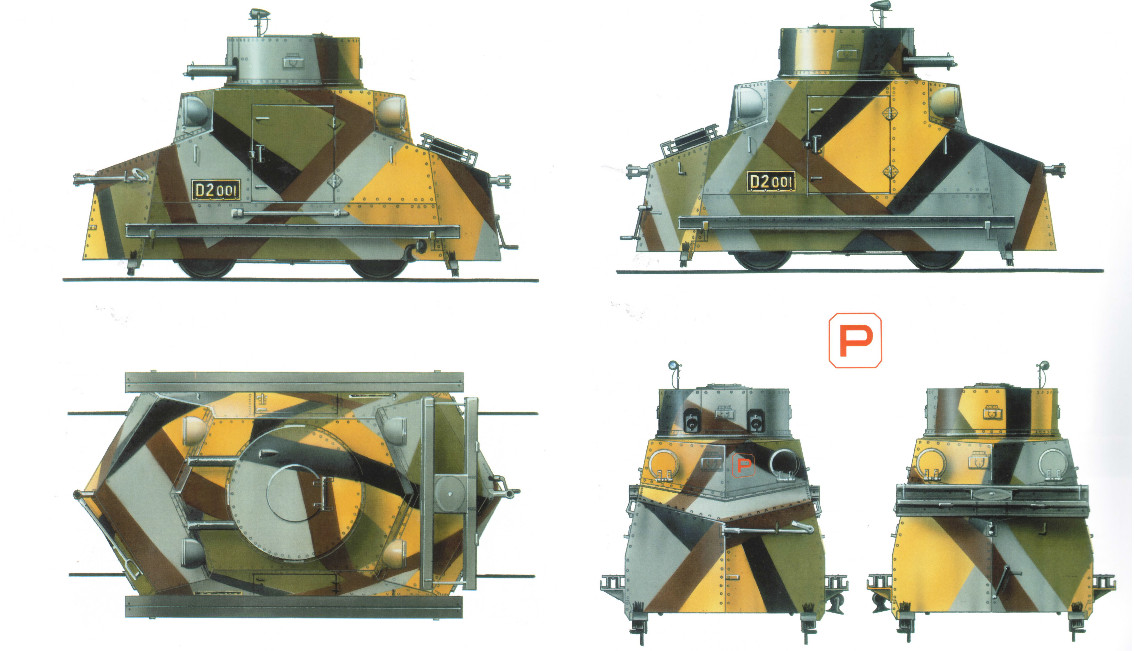
T18, 4 views
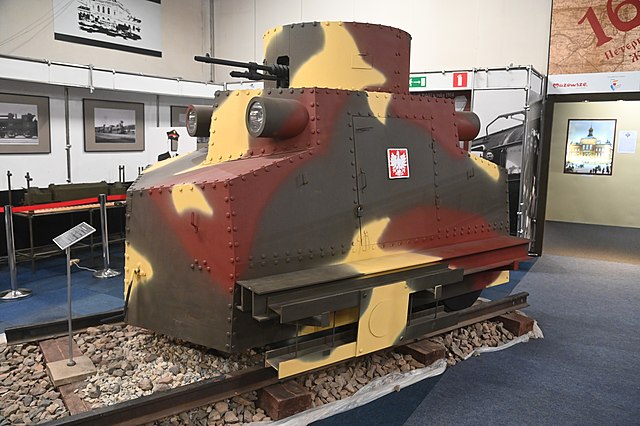
T18 in Polish service
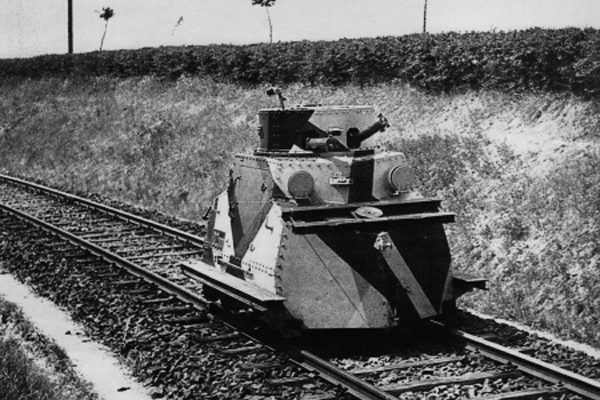
Same
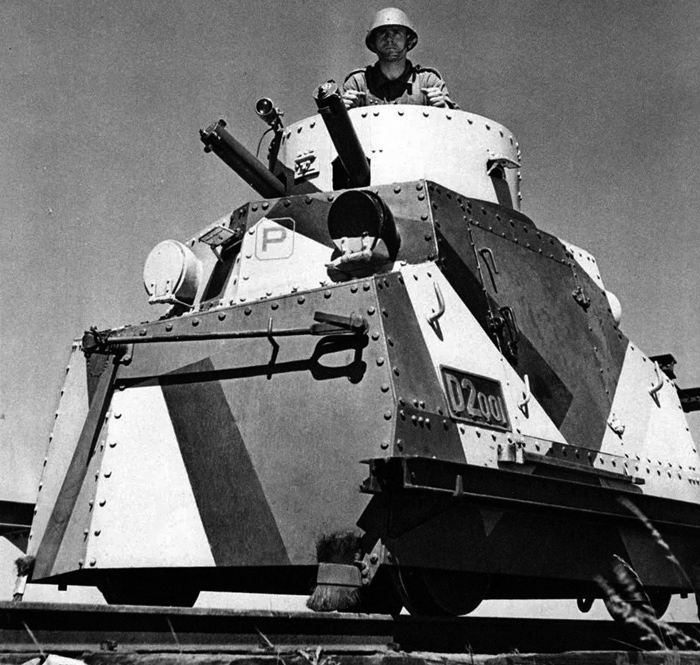
Czech T-18 HD
Sources
Adam Jońca. Tatra T18. Opancerzona drezyna. "Technika Wojskowa Historia". Warszawa Magnum-X Sp.Janusz Magnuski: Drezyna pancerna Tatra; "Nowa Technika Wojskowa" nr 1/1998
Adam Jońca: Polskie Pociągi Pancerne 1921-1939, Warszawa: Vesper, 2020
6. Pavel Lášek, Jan Vaněk: Obrněná drezína Tatra T18, Corona, 2002
10. "Regulamin broni pancernej. Opis i wskazówki obsługi pociągu pancernego. Projekt", Warsaw 1938
derela.pl/tatra
Book on the T18 by Ledwoch, Janusz
on archive.ph
pl.wikipedia.org
on shapeways.com
kits on scalemates.com
landshipsmodeling.com
- Baldwin Railroad battery 1861
- No 6 Garrison Arm. Train 1894
- Ladysmith Train 1899
- Crewe Works 1915 coastal train
- French mobile artillery battery (1914)
- Royal Navy armoured Train 1914
- Regia Marina Arm. Trains 1915-18
- Ajmer arm. trains 1916
- Hungarian MAVAG train
- German Panzerzug Ost (1916)
- Bolshevik Armored Tram 1917
- Finnish Arm. Train (1918)
- Zaamurets (Orlík, BP-4, Lenin)
- Khunkhuz
- General Annenkov
- Yenisei
- Amur
- Terek
- Don
- Dywizja Syberyjska trains 1918
- Kozak
- Piłsudczyk
- PP3
- Gromobój
- Pionier
- Śmiały
- Lis-Kula
- Hallerczyk
- Stefan Batory
- Generał Iwaszkiewicz
- Chrobry
- Wilk
- Danuta
- Poznańczyk
- Kaniów
- Zawisza Czarny
- Zagończyk
- Paderewski
- Mściciel
- Reduta Ordona
- Huragan
- Podhalanin
- Bartosz Głowacki
- Pierwszy Marszałek
- Groźny
- Śmierć
- Śmigły
- Stefan Czarniecki
- Generał Sosnkowski
- Putilov armoured trains
- Izhorskiy Armored Train
- Czechoslovak Legion Trains
- Estonian Trains
- Lithuanian Trains
- Zhang Zongchang Train
- Danuta
- Poznańczyk
- Generał Sosnkowski
- Paderewski
- Śmierć
- Pierwszy Marszałek
- Piłsudczyk
- Śmiały
- Groźny
- Bartosz Głowacki
- Smok Kaszubski
- Drezyna R
- Drezyna TK/TKS
- UK dywizjon Trains
- SOK Draisines 1945
- Arm. draisine Crochat
- Austro-Daimler Draisine
- Armoured draisine Tatra T18
- MBV-2 Rail cruiser
- D-2 Draisine (MBV-31)
- D-37 Draisines
- Krasnaja Zvezda (KZ-1)
- D-3 Draisines
- BTD heavy Draisines (5)
- CB-1 Draisines
- DT-45 Draisines
- BD-41 Draisines (12)
- BA-I-Zhd Railcar
- BA-6ZhD Railcar
- BA-20ZhD Railcar
- BA-10Zhd Railcar
- VS-60 Train/Wagon
- BP-35L/H Train
- NKPS-42/Wagon Train (40)
- PL-35 Arty Wagon
- PL-37 Arty Wagon
- PT-35 Arty Wagon
- KV-1 Arty Wagon
- Crimean 76mm univ. Wagon
- "Tank" Wagon
- BP-42 Train/PL-42 Wagon (10)
- BP-43 Train/Wagon (54)
- 7.62mm Maxim SPU-BP Flak wagon (28)
- 37mm PVO-4 FLAK Wagon (120)
- OB-3 Light Wagon
- 27th Div armoured Trains
- 29th Div armoured Trains
- 48th Arm. Div armoured Trains
- "Stalinets" armoured Train
- "Mir Jafar Bagirov" armoured Train
- "Kozma Minin" armoured Train
- "Dzerzhinets" armoured Train
- "Za Rodinu!" armoured Train
- "Kolomensky Rabochy" armoured Train
- Zenitnyy (AA) armoured Trains
- Goering's Asien
- BP42 armoured train (full)
- BP44 armoured train (full)
- Panzerjägerwagen BP44
- BR 52, Steyr Schwerer Schienen Panzer
- Schwerer gustav Train
- P204(f) rail tank
- Schienenkampfwagen SK 1
- Schwerer Spähzug (s.Sp.) Artilleriewagen
- LeichteSchienenkampfwagen 43
- Zeppelin Panzer Draisine
- Panzertriebwagen N17
- Panzertriebwagen N16
- Panzer Draisine Funkwagen
- Panzerdraisine/Pz.III turm
- Panzerdraisine/Pz.IV turm
- Panzer Draisine Le.Sp.
- Panzer Draisine Flakvierling
- S.Panzer Draisine Kugelblitz
- L2670 leichtes panzertriebwagen
- AB Ferroviana
- Littorina OM 36
- LiBli 42
- Type K2 Steam Locomotive No.134
- Type C56 Steam Locomotive No.31
- Type 90 240 mm Railway Cannon (Futtsu Cannon)
- Type 91 Broad-gauge Railroad Tractor (So-Mo)
- Type 94 Armoured Train
- Type 95 Armoured Railroad Car (So-Ki)
- Type 98 Railroad Tractor
- Type 100 Railroad Tractor
- Type 2598 Railroad Car
- Rinji Soko Ressha 1933
- 1940 coastal defence Trains
- Royal Armoured Corps Trains
- Romney, Hythe and Dymchurch Train
- Malaya Arm. train 1942
- 101-104. sz. páncélvonat
- Finnish Winter War Train
- Croatian Armored Train
- Can. Aleutian No.1 Armoured Train
- Slovak resistance armoured train
- Iraqi armoured train (1941)
- Polish 1945-55 trains
- Arm. train La Rafale 1948
- Tren Blindado 1958
- Panser Rel V16 (1955)
- White Train 1957-87
- RT-23 Molodets ballistic wagon
- Trans-Siberian Arm. Train 1970
- North Korean Arm. Train
- Krajina express 1990
- Volga (2022)
- Baikal (2022)
19th Cent. Trains
WW1 Armored Trains
 Poland
Poland
Interwar Armored Trains
WW2 Armored Trains
 France
France
 Austria
Austria
 Czechoslovakia
Czechoslovakia
 USSR
USSR
 Nazi Germany
Nazi Germany
 Italy
Italy
 IJA
IJA
 UK
UK
 Others
Others
☢ Cold war Armored Trains
References
blog.railwaymuseum.org.ukarmedconflicts.com Russian Trains
warhistoryonline.com
feldgrau.com ww2 german trains
cuttersguide.com
wikipedia.org/wiki/Armoured_trains_of_Poland
derela.pl/drais
derela.pl/tatra.htm